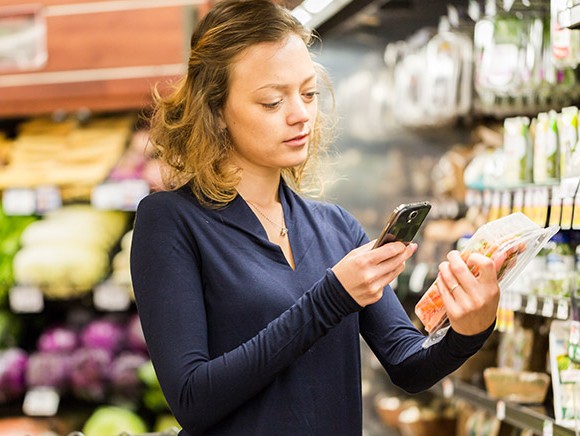
According to the Dutch private sector and the government, it is time to take important steps forward in improving the transparency of our food chain in order to safeguard the Netherlands’ future as an agri-food nation.
Last year, the Alliance for Sustainable Food and the Dutch Ministry of Economic Affairs conducted an investigation into which extra steps would be beneficial in expanding, streamlining and improving existing food-chain information flows about products and product traits, country of origin and certification. The report titled Een reis door de keten (‘A journey through the chain’) provides details of the findings.
GS1 Data Source and associated standards are by far the most widely used methods to exchange information within the chain. GS1 Data Source was originally set up for logistics purposes, but it has since become integrated with labelling information too. The reliability of all the data is safeguarded by the GS1 DatakwaliTijd 2.0 programme, a three-year programme with a budget of EUR8 million (financed by the food industry). The report recommends the continuation of this programme.
Several separate systems are used for information about production and country of origin. GlobalGAP numbers (GGNs) are provided for fruit and vegetables as well as other fresh products. These numbers comply with the GS1 standards for location coding, the Global Location Number (GLN). A sustainability network is being set up under the auspices of the United Nations and World Trade Organisation which will ultimately enable all farmers around the world to be identified with a GLN. This approach is currently being piloted, with involvement of the Netherlands, and it is already being used in New Zealand in line with government regulations.
EC identification marks of the supplier of each consumer unit are listed, in the ‘EU ovals’, for dairy, meat and fish products. If these numbers would receive a GLN counterpart and a uniform method would be developed for discovering the meaning of these codes, it would make it easier to identify the product’s origin for all stakeholders, including consumers.
More and more products display codes which direct people to the supplier’s website, where more information about the product is available. However, these codes are not displayed in a uniform manner. The report recommends that, in addition to the item code, suppliers should always use a QR symbol in line with the applicable GS1 standard in order to indicate the country of origin and website. Further information, such as certification details, can also be added to GS1 Data Source.
Greater insight into the origin of products is expected to increase consumer understanding and consumer confidence. That level of insight can be improved by giving consumers more access to product and origin-related information from existing systems that up until now have mainly been intended for industry use. There are already a number of apps for consumers (e.g. QuestionMark, Veggipedia) which provide digital access to all kinds of information, but these often use standards (e.g. barcodes) for scanning the product and are not directly linked to GS1 Data Source. The report recommends that such websites and apps should be provided with labelling information from GS1 Data Source. This must be based on good access and usage rights and obligations, including fair sharing of the costs. Netherlands Nutrition Centre Foundation (Voedingscentrum) and GS1 Netherlands are currently in consultation to develop a framework for this. To further bridge the awareness gap between consumers and manufacturers, both younger and older consumers can be encouraged to learn more about how food is produced and how food chains operate.
The report proposes multiple pilot projects related to country of origin, which can mark the start of a bigger shift towards improved chain transparency. In addition, the report highlights various current projects and initiatives for companies to join. The Netherlands can take the initiative in this respect and hence lead the way internationally. Providing things are implemented well, companies stand to benefit which will in turn lead to more sustainable food production.
Much has already been developed and is possible in terms of technology (ICT, scanning devices, etc.). The high degree of traceability that can be achieved between businesses (B2B) could also be used to inform the consumer (B2C). This offers many opportunities for applications. In practice, however, the matter of how to organise the collaboration often presents a bigger bottleneck than the technology itself, especially in view of the higher costs that do not necessarily translate into greater benefits. Hence, the burning question is whether consumers are prepared to pay a higher price in return for information of that kind. A critical success factor will be the development of appealing revenue models and organisational frameworks.
Source: ©Zoltan Fabian/Shutterstock.com